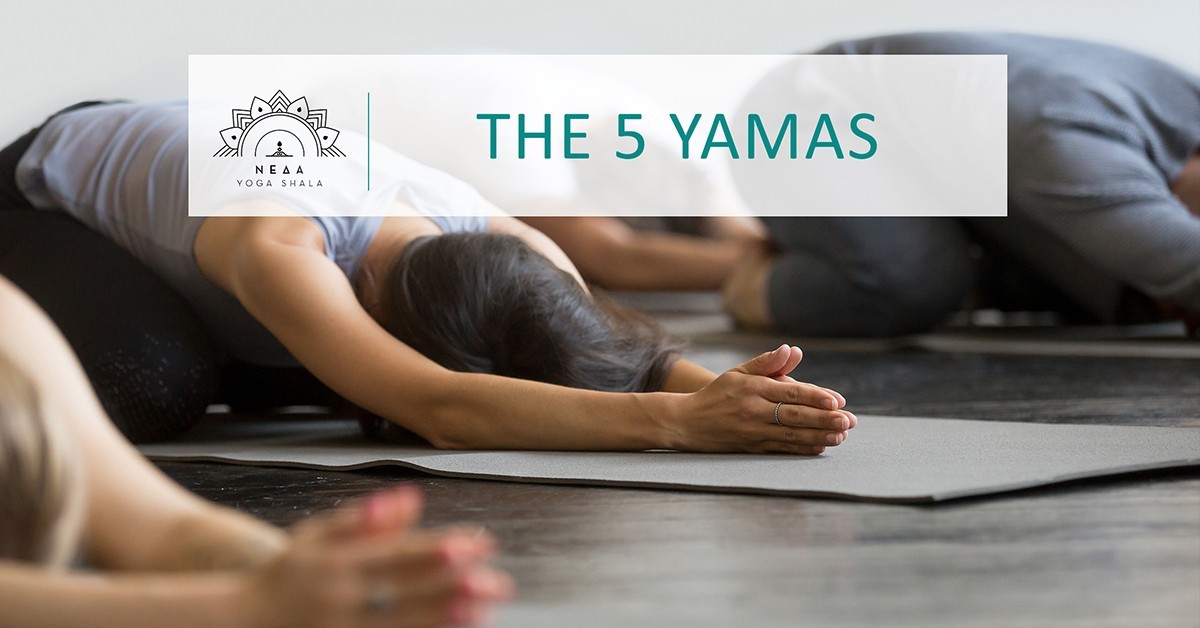
The 5 Yamas
Ahiṁsāsatyāsteyabrahmacaryāparigrahā yamāḥ. Yoga Sutras 2.30
Somewhere between the 2nd and the 5th century B.C., the great sage Patanjali wrote down the Yoga Sutras. This text became Raja Yoga’s main source of inspiration (even thought Raja Yoga predated Patanjali, through great sages like Shukracharya). The text consists of 196 aphorisms. It describes the nature of the mind in a very concise way, and it offers a practical system of spiritual development.
Raja Yoga as presented by Patanjali has 8 components: the first two are called Yamas & Niyamas, and they refer to certain qualities and disciplines that have to be cultivated in life. They are followed by Asana (stable and comfortable physical pose), Pranayama (expansion of prana, using breathing as the main tool), Pratyahara (withdrawal of the senses), Dharana (concentration), Dhyana (meditation) and Samadhi (superconscious experience).
Therefore, the Yamas are the first stage of the path. They consist of 5 universal moral principles that bring harmony between us and the surrounding world:
Ahimsa (nonviolence), Satya (truthfulness), Asteya (non-stealing) Brahmacharya (restraint from desires) and Aparigraha (non-possessiveness).
The deeper these virtues are rooted, the more helpful they are for the yoga apprentice to experience the fruits of their future practice. They form an emotional structure that is necessary for practicing correctly more advanced techniques.
The Yamas represent the positive and purer expression of our personality. The ultimate implementation of these principles is not restricted to actions, but it also applies to our words and thoughts. And of course, it begins with us. How many times do we become dishonest or violent with our own selves? How often do we “steal” from ourselves an opportunity, a feeling or a healthy body? At first, practicing the Yamas offers us the courage and the ability to recognize those instincts and behaviors.
Of course, the inspiration for someone to follow the path of Yamas cannot be imposed and it doesn’t come up on a whim. It is quite difficult to suddenly decide to become entirely honest, non-possessive, honorable etc. Implementing these principles is a never ending exercise with many layers. The power of this practice comes through asana, breathing, meditation and constant observation. That’s how we cleanse our body and mind, so that the cultivation of these habits becomes more natural and spontaneous. As the inner landscape becomes purer, there is an innate need to reflect that on all our aspects and expressions.
Therefore, the better our relationship is to the world (and to ourselves) and the more we have trained ourselves through the Yamas, the easier we will take our next steps towards meditation. In its turn, meditation will reinforce the way we connect to the world and to ourselves. In this way, all the steps or limbs of yoga collaborate with each other, guiding us to this eternal path of spiritual search!